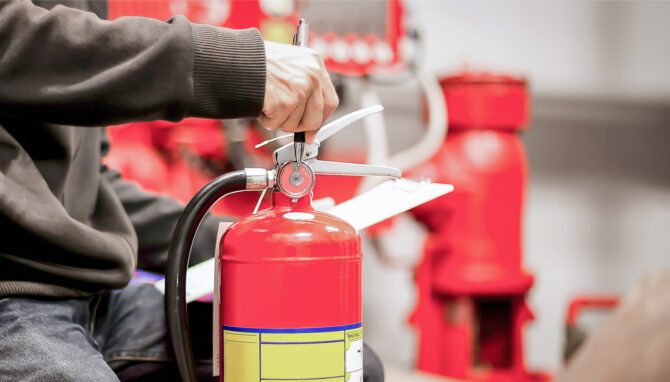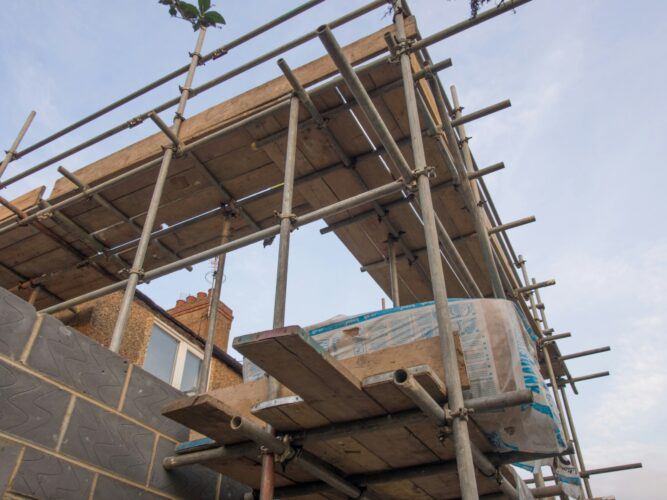Fire Door Checks
Fire doors are a critical part of fire safety in any building. Designed to prevent the spread of fire and smoke, they provide essential protection for occupants and give them time to evacuate safely. In the UK, the regulations surrounding fire doors are strict, and businesses are required to ensure these doors are maintained and inspected regularly. This blog provides an overview of UK fire door check regulations, helping employers understand their obligations and implement the right checks to ensure compliance.
Understanding Fire Doors
A fire door is not just an ordinary door. It is a carefully engineered system designed to:
- Resist the spread of fire and smoke for a specified period (typically 30, 60, or 120 minutes).
- Provide a safe escape route in the event of a fire.
- Allow the fire service more time to control and extinguish the fire.
For a fire door to work effectively, all its components—including the door frame, seals, hinges, and closing mechanisms—must function as a unit. Regular inspections and maintenance are crucial to ensure that fire doors perform as intended in an emergency.
Fire Door Regulations in the UK:
The use and maintenance of fire doors are governed by several pieces of UK legislation, primarily:
- The Regulatory Reform (Fire Safety) Order 2005 (FSO)
- Building Regulations 2010 (Part B: Fire Safety)
- BS 9999: Code of Practice for Fire Safety in the Design, Management, and Use of Buildings
These regulations outline the responsibilities of building owners, employers, landlords, and facilities managers in ensuring that fire doors are installed, maintained, and inspected correctly.
Key Requirements for Fire Doors
Installation
- Fire doors must be installed in accordance with British Standards (BS 8214), which covers fire door assemblies and BS EN 1634-1 for fire door testing.
- They must be fitted in the correct locations within a building, such as stairwells, corridors, and areas where the spread of fire could be rapid.
- A fire door must include intumescent seals (which expand in heat), appropriate hinges, and self-closing mechanisms to ensure it closes automatically after opening.
Fire Door Certification
- Fire doors must be certified and clearly marked with their fire-resistance rating (e.g., FD30 for 30 minutes of fire resistance, FD60 for 60 minutes). The certification label, usually placed on the top edge of the door, confirms compliance with fire safety standards.
- Certified fire doors should not be altered in a way that could affect their performance (e.g., cutting out sections of the door).
Regular Inspections
- use best endeavours to check all flat entrance fire doors at least every 12 months; and
- carry out checks of any fire doors in communal areas at least every 3 months, this includes; doors to stairways and lobbies, doors within corridors, doors to plant rooms, service cupboards and risers.
- Inspections should be carried out by a competent person with a thorough understanding of fire door regulations and components.
Daily Fire Door Checks
- Daily visual checks are a practical measure to ensure fire doors are operational and free of obvious damage. These checks are often carried out by fire wardens or building managers and typically involve ensuring that:
- Doors are not propped open or obstructed.
- Self-closing devices are functioning.
- There is no visible damage to the door, frame, or seals.
Fire Door Checklist for Inspections
When carrying out fire door inspections, there are key elements to look for. These include:
Certification:
Check for the fire door’s certification label or marking, usually found at the top or side of the door.
Door Gaps:
The gap between the door and the frame should be consistent and no larger than 4mm. Excessive gaps allow smoke and fire to pass through.
Seals:
Ensure that intumescent and smoke seals are present, undamaged, and properly fitted. These seals expand in heat to seal the gap around the door, preventing the spread of fire.
Self-Closing Mechanism:
Fire doors must be able to close completely unaided. The self-closing device should not be broken or disconnected. Test to ensure the door closes smoothly and latches shut.
Hinges:
Fire doors should have three secure hinges, all of which must be intact and in good condition. Damaged or missing screws can prevent the door from functioning correctly.
Damage:
Inspect for signs of warping, damage, or wear on the door itself, the frame, and the hardware. Damaged doors or frames compromise the fire door’s ability to resist fire and smoke.
Glazing:
If the fire door has glazed panels, ensure that the fire-rated glass is intact, and the glazing bead is secure. Any cracks or damages should be addressed immediately.
Who is Responsible for Fire Door Checks?
Under the Regulatory Reform (Fire Safety) Order 2005, the “responsible person” (employer, building owner, or landlord) is responsible for fire safety in non-domestic buildings. This includes ensuring that fire doors are inspected and maintained regularly.
In multi-occupancy buildings, such as apartment complexes or shared office spaces, fire doors in communal areas are the responsibility of the building owner or landlord. However, individual occupants are responsible for any fire doors within their premises.
Employers should ensure that competent individuals or third-party contractors are appointed to conduct fire door inspections and maintenance.
Consequences of Non-Compliance
Failure to comply with fire door regulations can result in serious consequences, including:
- Fines and penalties: Non-compliance with fire safety regulations can lead to significant fines.
- Imprisonment: In cases where negligence leads to injury or death, responsible persons could face imprisonment.
- Legal liability: Businesses could be held liable for damages if poor fire door maintenance results in the spread of fire and injury to occupants.
- Increased fire risk: Poorly maintained fire doors may not function as intended, putting lives at risk and increasing damage during a fire.
Conclusion:
Fire door checks are an essential aspect of fire safety management in the UK. By conducting regular inspections, maintaining proper records, and ensuring compliance with regulations, businesses can protect both people and property. Regular checks not only fulfil legal obligations but also provide peace of mind that fire safety measures are effective.
About Us
Westminster Compliance was established to provide a more personal, proactive health and safety consultancy that would keep businesses working and compliant with ever-changing legislation.
Our presentations and training are interesting and fun because we want our clients to buy into health and safety, and definitely not to see it as a boring, unnecessary nuisance. We know that our best service is provided to small and medium sized organisations and have developed a system that works in most industries.
We stick with straightforward language, keeping away from jargon, and do not make ridiculous promises. Most importantly, we realise that we are working with human beings.




